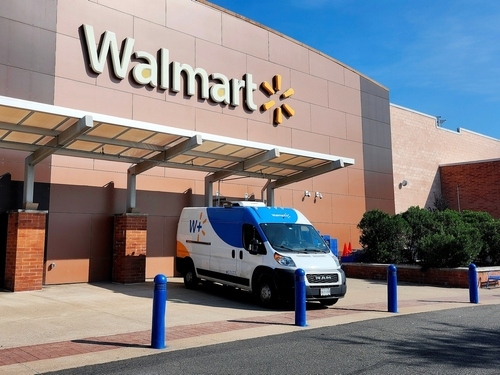BREAKINGVIEWS-BP now stands for ‘Best Partitioned’

The author is a Reuters Breakingviews columnist. The opinions expressed are her own.
By Yawen Chen
LONDON, Feb 6 (Reuters Breakingviews) - Two decades ago, BP BP.L made a big deal of repositioning itself as “Beyond Petroleum”. Then-CEO John Browne’s attempt to embrace lower-carbon energy came to nought, and 20 years later so did a similarly quixotic gambit by another now-ex boss, Bernard Looney. In 2025, Looney’s own successor Murray Auchincloss may examine the cards he’s been dealt and conclude that a more apt slogan for the $85 billion group is “Best Partitioned”.
Since Auchincloss took over in January 2024, BP shares have fallen 11%, while rivals like $201 billion Shell SHEL.L and $483 billion Exxon Mobil XOM.N grew. The upshot is BP trades at a palpable discount to peers: based on 2025 free cash flow of $11.8 billion, per analyst forecasts compiled by Visible Alpha, BP yields 14%. That makes it cheap compared to Shell’s 13% and Exxon Mobil’s 6%. It also trades at around 3 times 2025 EBITDA, versus Shell’s 4 times and Exxon’s 7 times.
Auchincloss has already announced layoffs and asset sales, but he has a chance to go further later this month when he presents a strategic update. The usual antidote to uppity oil investors is to shovel large quantities of cash their way via buybacks and dividends. Yet at 31% of capital employed, BP’s net debt, including operating leases, militates against much largesse. HSBC analysts expect the group’s leverage to remain the highest among the five majors they track until the end of the decade.
Furthermore, BP looks strategically stuck between two stools. On the one hand, Auchincloss has rowed back from Looney’s target to cut the group’s oil and gas production by 40% by 2030 compared to 2019, and may retreat yet further. On the other, BP’s output of these fossil fuels is now expected to stay flat to 2030, might still decline if the company sells more assets to cut debt, and Auchincloss still spent $5 billion last year on the green transition. With analysts already expecting BP to undershoot its current 2025 EBITDA target, the risk is an underwhelming equity story that fails to be sufficiently compelling for either green fans or oil bulls.
Throw in a 2025 global oil supply glut that could see crude prices fall further, and BP looks like a takeover target. With the valuation gap between itself and UK rival Shell at a high level, such a union would create huge synergies. But it could also risk a huge culture clash, an extended regulatory backlash, and punitive merger terms that reflect BP’s weak bargaining position.
Auchincloss does have one other option, however: he could break the company up. Corporate chieftains tend not to surrender their empires easily. But in BP’s case, a partition could create substantial value.
First, consider BP’s oil and gas exploration business. The unit is expected to bring in around $29 billion of EBITDA in 2025, per Visible Alpha. Strip out $3 billion to exclude what analysts estimate comes from trading activities, which could fetch a higher valuation separately. Then place the upstream business, which produces 2.3 million barrels of oil equivalent a day, on a 3.5 times EBITDA multiple, per a Stifel-compiled average of European peers. Overall the unit would be worth $90 billion – only a little more than BP’s entire current market value.
Auchincloss needn’t try to sell this in one chunk. In the U.S., BP has relatively mature deepwater projects in the Gulf of Mexico, and bpx energy in fast-growing areas including the Permian. The group anticipates its U.S. daily oil output will grow from 600,000 barrels to around 1 million by 2030.
Bpx’s operating cash flow may have been as much as $3 billion in 2023, Citi estimated. On U.S. peers’ average 5 times multiple, that is worth $15 billion. While Exxon and Chevron CVX.N are still digesting their acquisitions of $60 billion Pioneer Natural Resources and $44 billion Hess, U.S. players such as ConocoPhillips COP.N have a conservative balance sheet and plenty of M&A firepower to capitalise on a U.S. carve-out.
BP’s non-U.S. business could get interest from elsewhere. These assets, which include joint-venture partnerships in oil and liquefied natural gas (LNG) with the Abu Dhabi National Oil Company (ADNOC), may attract local players. ADNOC’s recent acquisition of chemicals group Covestro also suggests it may want to further expand outside the Gulf. Looney’s presence on the board of ADNOC vehicle XRG may help it identify choice BP assets.
Away from oil and gas production, BP might still get plenty of takers for its trading and refining units. National producers like Saudi Aramco 2222.SE are keen to expand abroad and would eye these businesses closely. On oil trader Glencore’s 4.5 times EBITDA multiple, BP’s trading business could be worth $13.5 billion. Refining might fetch another $27 billion assuming 9 times that unit’s $3 billion of 2025 EBITDA. In the U.S. and Europe, regional players such as $45 billion Valero Energy VLO.N and privately held Ineos could also be keen bidders.
On the cleaner side of the portfolio, the growing and profitable biofuels business is on private equity’s radar. On the same 10 times EBITDA multiple for 2025 that U.S. buyout group KKR paid last year for a stake in rival Eni’s ENI.MI similar business, BP’s greener arm could be worth $20 billion. Similarly, BP’s retail sites could be worth $24 billion assuming the same 6 times EBITDA multiple it paid for TravelCenters of America. The lubricants business could be worth another $12 billion, per Stifel.
Throw in just under $9 billion in renewables, as estimated by Bernstein, and a $2 billion drag from the corporate unit, and the sum of BP’s parts could amount to $193 billion, Breakingviews calculated. Strip out about $59 billion of net debt plus leases and other liabilities, and the equity would be worth $134 billion. That’s 57% above BP’s current share value.
Judging by his approach thus far, this sort of root-and-branch overhaul is not part of Auchincloss’s thinking. But it arguably should be. If BP shareholders get on board with the idea that the company is best partitioned, it may end up being something the group gets shoved into.
Follow @ywchen1 on X
CONTEXT NEWS
BP announced on Jan. 16 that it would cut around 4,700 staff, or over 5% of its total workforce, as part of CEO Murray Auchincloss’s efforts to reduce costs.
BP told staff that 3,000 contractor positions will also be cut, according to a statement to Reuters.
BP is due to report annual results on Feb. 11 and provide a strategic update on Feb. 26.





